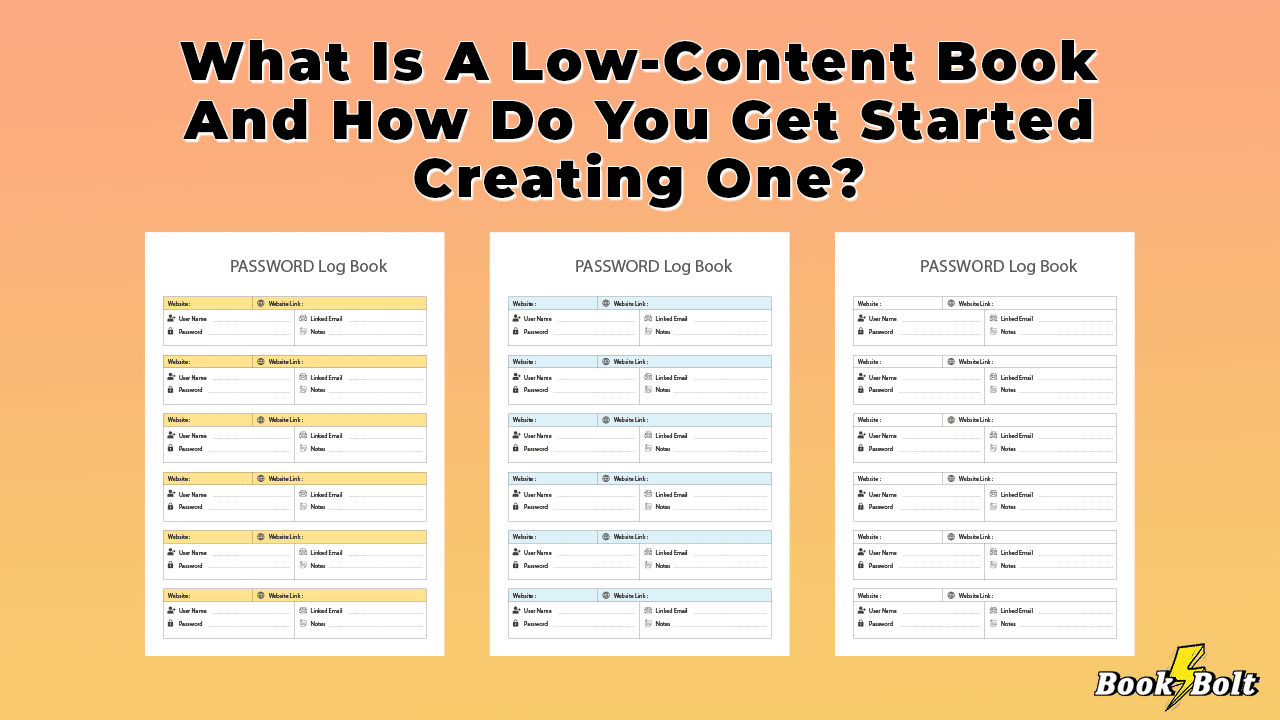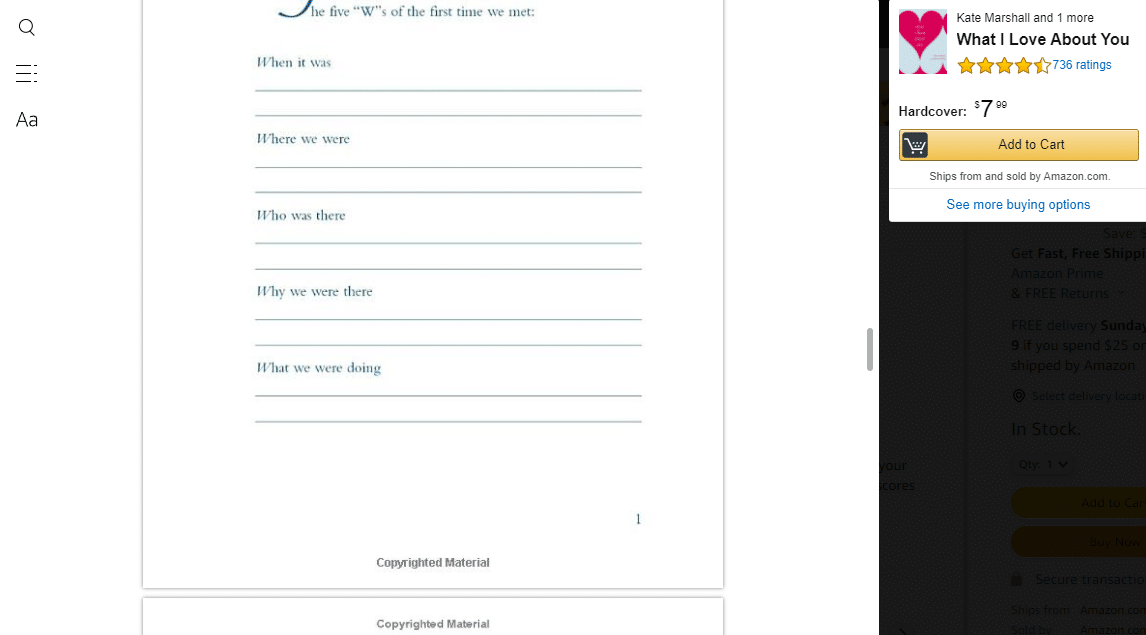
Known as the world’s largest online retailer, it’s safe to say that there’s no more than a handful of people on the planet who aren’t familiar with Amazon. The company sells practically anything you can dream of, including professionally published and self-published books. In fact, at the end of 2019, Amazon had published over two million books, which is quite a feat. This may leave you wondering if there’s an opportunity for Self-Publishing books on Amazon, and the answer is a definitive “yes!”.
But with so much content out there, do you really need to spend months researching and writing an entire book in order to self-publish, especially if you’re not a professional writer? Not really. You just need to get into the low-content book publishing business.
So, what are these types of books and what does it take to get started?
Here are the basics.
What Are Low-Content Books And Why Get Started In The First Place?
Book lovers around the world love sinking their teeth into a good mystery, romance, crime thriller or any other type of fiction and non-fiction book. What makes these books so great is the words that they consist of. These words are used to tell a story to uplift us, to teach us something new, to transport us to new and unimaginable places.
Yet, apart from researched articles, novels, essays and the wide genre of books in general, there are also low-content books that many people enjoy. The market for them is huge and growing extremely quickly. They’re also a great way of generating passive income.
So, what are low-content books? Essentially, these are books that have a significantly lower text and image count than their usual counterparts. If you’re struggling to imagine this, here are a few examples of low-content books: they can range from journals which you write your deepest thoughts in, books for musical notes, recipe books, books containing puzzles such as Sudoku, Crosswords and more. And the best part? They’re gaining a vast following and fast!
Today, pretty much anyone with a computer and an internet connection can self-publish low-content books and there are several reasons why you should give this a try to boost your passive income. Here are some of them:
- It takes only a few hours to create your low-content book (if that!). Most are created in minutes
- No website is required and neither is an email list
- The software is readily available
- Investment in business intelligence tools is quite affordable
- There’s no need to be a prolific writer or a writer at all
- You don’t need to invest in paid advertising (although you can to grow faster)
- You’ll excel if you’re good at keyword research and analytics
- There’s no need to stock inventory: it’s a print-on-demand business handled by Amazon KDP (Kindle Direct Publishing).
How Can You Get Started With Low Content Books?
If all this sounds good, then you’re ready to get started, right? But what are some of the first steps you need to take to create your first low-content book and sell it on Amazon?
Here are the essentials!
Start with the right mindset: Low-content book publishing is a long-term game and you need perseverance, persistence and patience. This is why it’s crucial to have the right sort of mindset from the beginning. To ensure you don’t place all your eggs in one basket, start out slow and see that your low-cost publishing project is not your only source of income. Rather, build slowly over time to create your business foundation. The only way you’ll be able to do that is when you create unique content and offer value that’s geared towards specific or underserved audiences.
Choose your launch date: There are so many formal and informal holidays that it would be wise to determine when’s the best time to launch your low-content book. One great example of this is Valentine’s Day where you have lots of room and scope for creativity. Launching your low-content book in the run-up to this global holiday is ideal for two reasons.
- The holiday is a great opportunity for sales because low-content books make for a good gift.
- The content of your low-content book can be aligned with the premise of the holiday.
You’ve got the opportunity to make more low-content book sales that are aligned with holidays that people love and care about as they search for the ideal gift on Amazon. There are, of course, many other holidays for you to choose from but taking a look at some of these can help you narrow down your niche.
Select your niche: It’s time to choose your niche. While you literally have the world at your fingertips, choose a niche you’re comfortable with and one that has proven to be successful online.
But how do you know which niche is successful online? Here are some ideas to help you get started:
- Wedding planner books or wedding budget books
- Kids books (ranging from coloring to connecting the dots and others)
- Adult coloring books
- Weekly or monthly planners
- Log books
- Puzzles and word search books
- Flip books
- …and more
As a tip, give these five a special consideration: meal planners, music notebooks, drawing prompt journals, Kanji practice paper notebooks and diabetes food journals. The reason for the latter selection is that they’re both extremely niche categories and they also produce sizable sales with a tidy amount for the authors and publishers that’s not below $500 per month each.
The front cover design: This is what you’ll want to spend a considerable amount of time on as it’s an industry best practice to have a well-designed cover. The reason? The cover of a low-content book is what attracts the most attention.
While the content inside the book may have little to no text and can range from lines (for writing or for music), coloring shapes and even recipes, your cover is ultimately the first thing that your buyers will see.
You therefore need to be able to attract them right from the get go. One example of an activity book with exceptional design that stands head and shoulders above others is the adult coloring book above. Why is it so successful? Because the colors are bold and funky, the text is well placed and sized, the images are catchy and it tells you exactly what it is in the space of only a few words!
What’s more, the interior and exterior are well-aligned with each other. As the old saying goes, people do judge a book by its cover, so make sure your front cover design is flawless.
Titles, subtitles and descriptions: Another area where you need to be immaculate is through your titles, subtitles and descriptions. Although it might sound obvious, ensuring that your spelling is correct, that you use the right keywords and that there’s accuracy in terms of what you’re creating, will go a long way to creating value. This is known as developing flawless metadata.
Competition: There’s certainly a lot of competition in the world of low-content book publishing and your marketing efforts will need to reflect that. One of the easiest ways to get started is by building an email list and the best part is that it’s free to do so. This will enable you to create a base of recurring customers and promote directly to those who’ve already purchased from you. A highly engaged email list will help you generate reviews better.
Another tip here is to use ads wisely.
We suggest that you introduce ads after you’ve followed all of the steps to creating your first low-content book. You may wish to use a website and social media to sell on Amazon, but remember that tracking this can be quite difficult. Over time, and once you’ve got an established brand, you will be able to leverage social media to sell more.
Perform regular health checks: Nurturing your assets means keeping tabs on your well-performing books by tracking BSR (best sellers rank) over time. If you notice a decline, you can take stock of keywords and categories or even use your email list to promote some of your older books to generate sales and reviews. It’s advisable to spend more time on one high quality book as opposed to issuing large quantities of low-value books for the sake of a single sale.
And the costs?: When it comes to costs, it’s always a great idea to see how others are pricing their low-content books in similar niches. You will always be able to raise your prices at a later stage. An industry best practice is to avoid pricing above the average, unless you’re an established brand.
Conclusion
As we wrap up, we want to emphasize just how easy KDP publishing can really be! Like any business, it requires patience, perseverance and the right mindset. The rest of the tools you need are all readily available, but we’ll leave that topic for another post.



Laurel
I will be purchasing a laptop for several reasons one to create print on demand planners and journals. What specs do I need?
Dr. Sushil Rudra
Informative and helpful. Thanks for sharing valuable information.